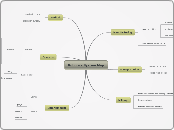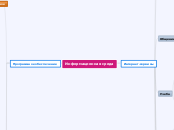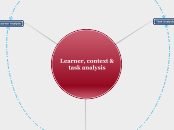Special Education
Advisory Committee
O.Reg 464/97
PPM 156 Supporting transitions for students with special education needs
The transition plan must be stored in the Ontario Student Record (OSR) documentation folder.
Every transition plan will identify specific transition goals, support needs, the actions required to achieve the goals, roles and responsibilities, and timelines for the implementation and/or completion of each of the identified actions.
The physical, emotional, and learning needs of the student are considered when developing a transition plan, to determine if the student requires support when making transitions
For students who have an IEP, the transition plan must be reviewed as part of the review of the IEP
All transition plans must be developed in consultation with the parent(s), the student (as appropriate), the postsecondary institution (where appropriate), and relevant community agencies and/or partners, as necessary
At the discretion of the board, a transition plan may also be developed for students who receive special education programs and/or services but do not have an IEP and have not been identified as exceptional.
The transition plan is developed as part of the IEP, and must be developed for all students who have an IEP, whether or not they have been identified as exceptional by an IPRC
The school principal is responsible for ensuring that student transition plans are developed, implemented, and maintained in accordance with the requirements of this memorandum
sets out for school boards and schools new requirements for transition plans for students with special education needs from Kindergarten to Grade 12.
PPM 140 Incorporating methods of applied behaviour analysis (ABA) into programs with students with autism spectrum disorders
Requirements
2. School board staff must plan for the transition between various activities and settings involving students with autism
1. School boards must offer students with autism special education programs and services, including, where appropriate, special education programs using ABA methods
intended to strengthen collaborative working relationships between parents, schools, and the community
establishes a policy framework to support incorporation of ABA methods into school boards’ practices
provide direction to school board to support their use of applied behaviour analysis (ABA) as an effective instructional approach in the education of many students with autism spectrum disorders
PPM 85 Guidelines for Approval and Provision of an Education and Community Partnership Program (ECPP)
facilitates transitions to future educational success.
provides critical support to meet the needs of children and youth who cannot attend
school due to their primary need for care, treatment and/or rehabilitation services
Children and youth in these programs may have:
• one or more exceptionality and represent the highest needs with the exceptionality
• physical or mental health needs requiring them to be hospitalized
• be in conflict with the law or at risk of being in conflict with the law
• possible or diagnosed mental health or psychiatric needs
• severe emotional and behavioural needs and/or
• addictions.
PPM 81 Provision of health support services in school settings
services that extend beyond educational services and are not included in the normal preventive health programs already provided by boards of health to school children
represents a sharing of responsibilities by the Ministries of Education, Health, and Community and Social Services
responsible for assessing pupil needs, and for providing such services as injection of medication, catheterization, manual expression of the bladder, stoma care, postural drainage, suctioning and tube feeding
PPM 76C Alternative educational programs and services for deaf, blind, and deaf-blind exceptional pupils
provide curricula that conform to ministry policy and guidelines and that recognize the identified needs of the exceptional pupil(s) involved
be developed or modified in consultation with the appropriate Provincial School or the Centre Jules-Léger
be supported by the special education services and special materials that these exceptional pupils might require
recognizes the need for flexibility in providing funding for a range of alternative placements for deaf, blind, and deaf-blind pupils who are enrolled in school board programs
PPM 59 Psychological testing and assessment of pupils
outlines the principles that need to be considered regarding psychological services for
students in schools (consent, privacy, professional conduct, confidentiality, assessment)
PPM 11 Early identification of children's learning needs
Provides principles and resources for early identification
School board requirements
Ensure that educational programs are designed to accommodate these needs and to facilitate each child's growth and development
Have procedures to identify each child's level of development, learning abilities and needs
PPM 8 Identification of and program planning for students with learning disabilities
provides information around recognition/identification of LD’s, early screening, assessments, and program planning (considering UD and DI)
Gives definition of learning disability
PPM 1 Ontario schools for the blind and deaf as resource centres
resources/services provided to schools include Audiological, Psychological, Assessment,
Consultative, and PD
formation of a separate and identifiable resource services program within each school to enhance the schools' capability to provide appropriate services to school boards and agencies that have hearing impaired, visually impaired, and deaf-blind pupils in their jurisdictions.
Funding
Key Components of the
Special Education Grant
Behavioural Expertise Amount
provides funding for school boards to hire board level Applied Behaviour Analysis (ABA) expertise professionals
Care, Treatment, Custody & Corrections Amount
supports educational programs in Care, Treatment, Custody and Corrections facilities, known as “Section 23” programs
Facilities Amount (FA)
supports school boards’ provision of education programs to students in care, treatment or detention facilities
Special Incidence Portion (SIP)
funding towards the costs of extra staff support relating to the extraordinary health and safety issues of specific students who require more than two full-time equivalent board-paid staff at all times
Special Equipment Amount (SEA)
supports the purchase of equipment that may be required by students with special education needs
2 components
SEA Per Pupil Amount
is to be spent to make specialized computer technology available to individual students, as well as to pay for related training, insurance and technician services for all SEA-funded equipment
SEA Claims-Based funding
pay for the non-computer based equipment individual students need, after boards pay the first $800
Special Education Per Pupil Amount (SEPPA)
accounts for more than 50% of the total
special education grant
Differentiated Special Education Needs Amount (DSENA)
4 components of DSENA include:
4. Multi Disciplinary Supports Amount
provides funding to each school board for a multi-disciplinary team of up to four new additional staff to support students with special education needs in a way that reflects their local needs
3. Base Amount for Collaboration
and Integration
The same amount goes to each board, regardless of size, “to
explore collaborative and integrated approaches to serving students with special education needs
2. Measures of Variability (MOV)
complex statistic arrived at for each
board that depends on 13 factors
a) how many students receive special education programs and services;
b) student achievement as measured by Education Quality and Accountability
Office (EQAO)
c) how many students taking part in EQAO testing requiring three or more accommodations
d) how many students have not earned 16 credits by the end of Grade 10
e) how many students are taking Locally Developed and “K” course at high school
f) an adjustment for rural and remote boards
g) an adjustment for First Nations, Métis and Inuit students
1. Special Education Statistical
Prediction Model (SESPM)
uses a number of socio-economic factors for each board (as measured for their area in Canada’s 2006 census) which seem to make their students more likely to need special education programs and services
Used to be called the High Needs Amount (HNA)
Under the special equipment amount, each board receives a base amount plus a per-pupil amount, which together may be used to buy computers, software and other equipment for students with special education needs
The Special Education Grant (SEG)
almost all special education grants are based on
per pupil amounts multiplied by total number
of students
intended to support additional costs of special education programs and services
Foundation Grant (FG)
provides funding for all students
funding data for every school board in Ontario
is posted by the Ministry
Wondering: How early does the Ministry decide the departments anticipated needs for the following year? What goes into these decisions?
Legislation
The Lieutenant Governor in Council
may make regulations governing:
the duties of district school boards or school authorities in relation to special education advisory committees.
1997, c. 31, s. 31
the powers and duties of special
education advisory committees
practices and procedures relating
to special education advisory committees
the establishment and composition of
special education advisory committees
Under the Education Act 1990
The Lieutenant Governor in Council may
make regulations requiring school authorities to
establish special education advisory committees.
1997, c. 31, s. 31
Wondering: Why haven’t there been many amendments since 1998?
School Board Obligations
Provide relevant in-service training
during regular SEAC meetings
for all members
Provide an opportunity for SEAC to
be heard by the board
must provide this opportunity before
any decisions about recommendations
are made
Establish a SEAC
One or two people to represent First Nations
students
Representatives from up to 12 local associations/
organizations
Wondering: How does a board decide who can be a member of the committee? Do they need special education experience?
Roles & Responsibilities
SEAC participates in reviews of
board special education plans
Participates in the annual budget
process in regards to education
Reviews financial statements
as they relate to special education
Wondering: In what capacity does SEAC make changes to delivery of special education programs?
History
Established Jan. 1 1998
Each school board and school authority must establish a Special Education Advisory Committee (SEAC). These committees are made up of elected school board trustees and representatives from local associations with an interest in special education.
makes recommendations to their board or authority on anything that impacts the establishment, development and delivery of special education programs and services
provides important advice on special education to their local board or school authority
Wondering: Where can I find more information about SEAC, and the history of its addition to the Education Act?









